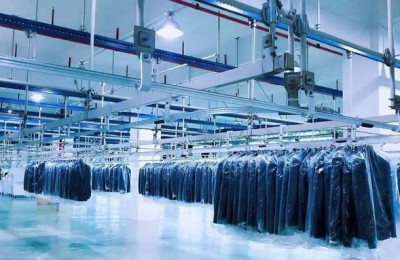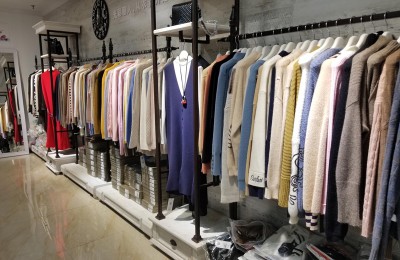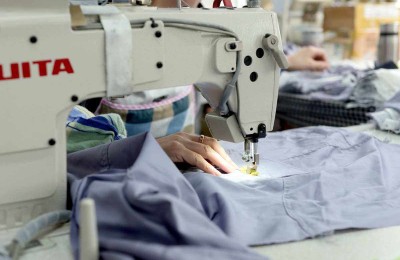China’s textile industry faces the risk of losing the international market due to cotton prices
“Our orders have dropped significantly since the beginning of this year.” Zhong Daguang, general manager of a clothing company in Dongguan, Guangdong Province, complained that the price of cotton in the international market has continued to fall, which has formed a huge contrast with the price of Chinese cotton, causing companies to lose money in the international market. lose competitiveness.
The interview learned that because of the upside down price of cotton at home and abroad, most garment foreign trade companies in the Pearl River Delta are faced with the situation of not being able to get foreign orders, or being afraid to accept orders.
“China’s textiles are losing the international market!” Sun Huaibin, spokesperson of the China National Textile and Apparel Industry Federation, said at the 2012 Textile Industry Economic Operation Conference held on the 31st that from January to April, China’s textile and clothing exports increased by 1.07% year-on-year, among which textiles Exports grew by only 0.15%. He analyzed that the downward pressure on China’s textile exports is mainly due to the widening price difference between domestic and foreign cotton.
Due to insufficient demand in the international market, international cotton prices have fluctuated and fallen since September 2011, and the price gap with the domestic market has continued to widen. As of May 25, 2012, the domestic price of grade 328 cotton was RMB 18,853 per ton, and the price in the international market after 1% tariff and value-added tax was RMB 13,393 per ton, RMB 5,460 lower than the domestic market price.
“This directly leads to negative growth in the export of cotton products.” Sun Huaibin said. Due to the widening price difference between domestic and foreign cotton, some of China’s textile and apparel international market shares have been transferred to other countries.
The latest data shows that from January to March this year, China’s textile and apparel market shares in the United States and Japan were 35.58% and 72.03% respectively, down 4.55 and 2.92 percentage points respectively from 2011. Among them, the market share of cotton products dropped significantly.
Since the beginning of this year, affected by the complex economic environment, the production growth rate of China’s textile industry has declined, corporate efficiency has declined, and downward pressure on exports has increased.
According to data from the China Textile and Apparel Federation, from January to April, the country’s 36,700 textile enterprises above designated size achieved a total industrial output value of 1.677058 billion yuan, a growth rate that was 17.43 percentage points lower than the same period last year. The growth rate of industrial sales output value dropped by 17.62 percentage points compared with the same period last year.
Among them, the export situation is the most severe. According to statistics, from January to April, China exported a total of US$71.003 billion in textiles and clothing, a year-on-year increase of 1.07%. Among them, textile exports grew close to zero. The export volume of textiles and clothing decreased by 2.23% year-on-year.
According to data from the China Textile Federation, from January to March, the total import volume of textiles and apparel from the three major European, American and Japanese textile and apparel markets fell by 6.55% year-on-year. China’s textile exports to emerging economies such as Southeast Asian countries are also declining. From January to April, China’s exports of textiles to ASEAN increased by 2.69% year-on-year, a decrease of 59.66 percentage points from the same period last year.
Sun Huaibin said that in recent years, with the continuous rise of labor costs, the wages of workers in the textile industry have been close to the average level of the manufacturing industry. He emphasized that labor costs are no longer the main reason for the decline in exports. The pressure mainly comes from the price difference between domestic and foreign cotton. “The continued expansion of the price difference between domestic and foreign cotton weakens the international competitiveness of the textile industry.”
“The obstruction of foreign trade and the decline of the domestic market will have an impact on the status of China’s garment industry in the international market and the domestic market structure. China’s textile and garment industry is facing an unavoidable new situation.” China Textile Construction Planning Institute Dean Li Jincai said.
Most Chinese textile and garment enterprises are export-oriented. Although they have gradually shifted to domestic sales in recent years, export is still the main direction of textile and garment enterprises. China Textile Federation predicts that if the gap between domestic and foreign cotton prices does not narrow, China’s textile and apparel export situation will continue to be severe.
In order to ensure that the textile industry continues to operate smoothly, the China Textile Federation recommends that the state adjust and introduce relevant policies in a timely manner. When releasing cotton from state reserves, financial subsidies should be adopted, and price limits should be implemented to stabilize domestic cotton prices and narrow the price gap between domestic and foreign cotton. . At the same time, we will speed up the reform of the cotton circulation system, improve the cotton macro-control mechanism, and achieve market-oriented docking of domestic and foreign cotton prices. At the same time, the industry itself should also accelerate transformation and upgrading to enhance the added value and competitiveness of industry products.
Disclaimer:
Disclaimer: Some of the texts, pictures, audios, and videos of some articles published on this site are from the Internet and do not represent the views of this site. The copyrights belong to the original authors. If you find that the information reproduced on this website infringes upon your rights and interests, please contact us and we will change or delete it as soon as possible. </p





